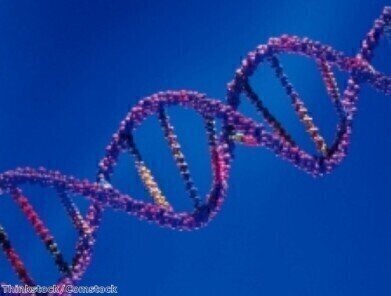-
 While DNA is usually represented as a double helix, a cell contains compacted strands of DNA
While DNA is usually represented as a double helix, a cell contains compacted strands of DNA
Bioanalytical
Gene expression found to be regulated by certain protein
Jan 23 2014
The architecture of DNA has been found to be maintained by a specific protein. The protein Acidic leicine-rich nuclear phosphoprotein family member E (ANP32E) is responsible for maintaining the regulation of genes, according to a new study.
Scientists from the Institut de Genetique et de Biologie Moleculaire et Cellulaire, France, and the National Cancer Centre Singapore (NCCS) have found that ANP32E serves to regulate gene expression. It was found that cells that had low amounts of the protein did not have the correct chromatin structure.
The scientists also discovered that gene expression can be altered due to ANP32E's ability to remove histone H2A.Z from DNA. It is thought that this new breakthrough could help in the development of new novel therapeutic strategies for developmental diseases.
Due to be released on January 30th in the journal 'Nature', the study used a mouse that had been genetically modified in order to show how ANP32E maintains the structure of DNA in living cells. This protein is also present in humans.
Normal representations of DNA show it to be two strands that form the helix, said Dr Patrick Reilly, a senior scientist at NCCS. However, the amount of DNA that is present within a cell results in these strands becoming compacted into structures that are far more complex, which are called chromatin. This restricts the volume of DNA present in the cell but still allows the encoded information to be accessed.
When errors occur in these chromatin structures it can cause a number of developmental diseases as well as cancers. Scientists hope that by understanding how these structures are controlled they will be able to develop new ways to regulate specific genes, which could help to reverse the impact of a number of diseases as well as help toward new anti-cancer treatments.
A specific component of chromatin, H2A.Z, has previously been found to be an important aspect when it comes to controlling certain areas of gene expression. The scientists found that ANP32E is able to remove H2A.Z from the DNA, which alters the gene expression.
Dr Reilly developed the genetically modified mouse so that it lacked ABP32E, which showed that there was not a proper chromatin structure within the cells with a low amount of the protein. It is thought that this important finding could help towards future therapeutic strategies. However, further work is needed before it can reach this point of development.
Digital Edition
Chromatography Today - Buyers' Guide 2022
October 2023
In This Edition Modern & Practical Applications - Accelerating ADC Development with Mass Spectrometry - Implementing High-Resolution Ion Mobility into Peptide Mapping Workflows Chromatogr...
View all digital editions
Events
May 15 2024 Birmingham, UK
May 19 2024 Brno, Czech Republic
May 21 2024 Lagos, Nigeria
May 23 2024 Beijing, China
May 28 2024 Tel Aviv, Israel













